Kumbh Mela is apparently the largest congregation of pilgrims in the world. Kumbh Mela 2019 has been the talk of the country what with these beautiful advertisements and BBC coverage of the tent city at Prayagraj. Truth be told, this event wasn’t really on our immediate bucket list. But we got drawn when a travel group offered us an experience. Divine calling..hmm..we needed to figure out.
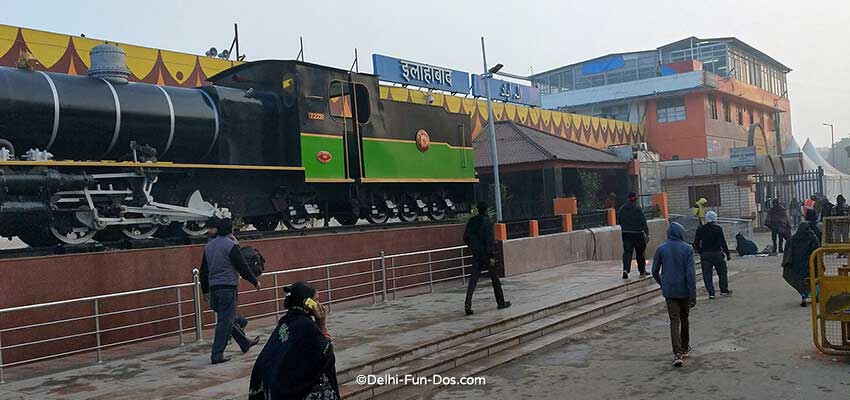
It was very short notice and we had RAC tickets for the Humsafar Express that connects Delhi (Anand Vihar Railway Station) and Allahabad Junction. But the tickets got confirmed on the journey date and we saw this as a good omen. We boarded at 10.30 at night and reached Allahabad Junction at 6.30 next morning. It was still a day for the actual Kumbh Mela at Sangam to start.
Sangam is the confluence of the rivers Ganges, Yamuna, and Saraswati. The riverside is roughly 12 km from Allahabad Junction Station and we covered this distance in installments – first an auto rickshaw, followed by a Kumbh free shuttle bus, and then an e-rick. Do travel light otherwise the commute can seem arduous.
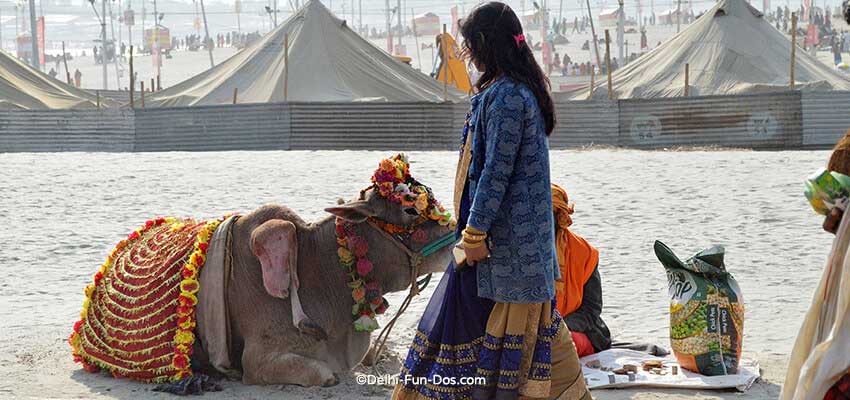
The Sangam area is a temporary settlement. The tent city has been built on the river bed and there is no permanent construction here. A host of footbridges have been built by placing huge barrels across the river. These footbridges connect the mainland to the tent city which is the chief accommodation area exclusively for Kumbh Mela.
There are all sorts of accommodations at the Kumbh camp this year. UP Tourism is offering fancy tents with all sorts of facilities and these cost about INR 20K per person per night. But there are more affordable options too and beds are available from about INR 1000 per night with meals. Suraj Misra, a travel operator at Prayagraj, is offering some basic stay options and you can contact him at 9140480552 for details. The arrangement would be humble here but many believe austerity is an integral part of pilgrimage. He also ensures freshly cooked home-style meals and a guided trip to the Sangam area.
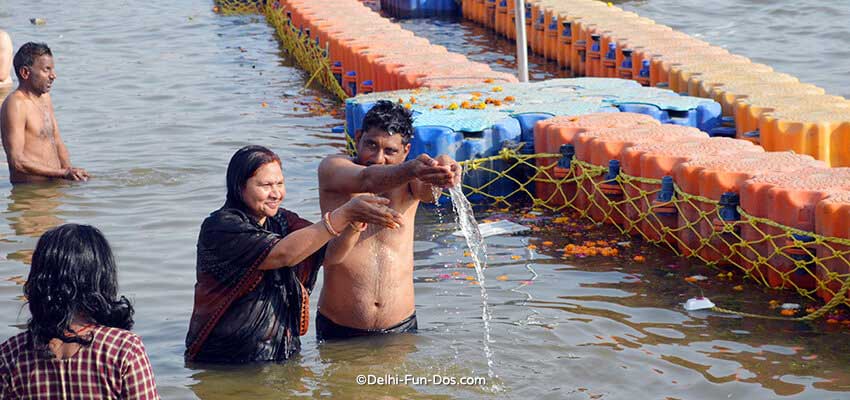
The thing to do in Kumbh is to take the holy dip at the Sangam. That is the core event here and all arrangements are in view of this activity. While the Kumbh Mela continues for more than a month, till 4th March this year, there are certain auspicious days for Shahi Snan (the grand dip) when the crowd of devotees surges. We visited Kumbh on the first auspicious day, Makar Sankranti when reportedly about a whopping 1.6 crores devout took the holy dip at Sangam. Such huge footfall puts all arrangements here to test and if you suffer from agoraphobia (fear of crowded places), you could skip the special days and visit on any other day during the Kumbh period.
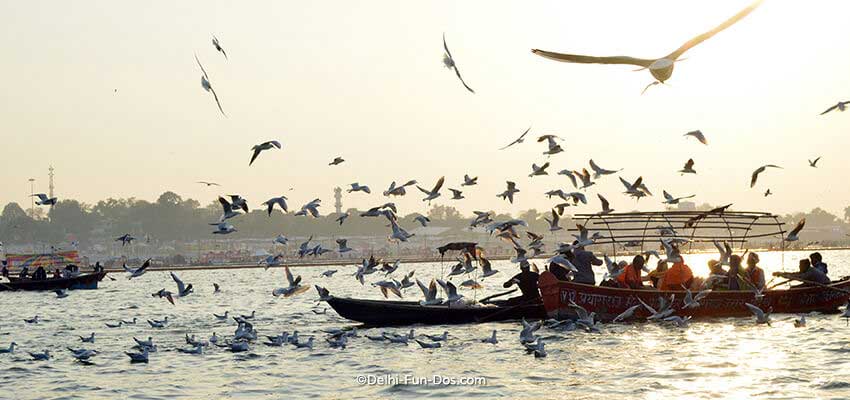
We visited the Sangam area on the afternoon of Makar Sankranti and when we reached, the riverside was pretty relaxed. We took a dip in the chilly water, dried ourselves, pottered around, had tea, and went on a boat ride. The boatman typically shows you which part of the water body is Ganga (the darker water), and which is Yamuna (muddier water). River Saraswati, it is said, flows below the surface and thus invisible. Experts however say that Saraswati has dried up and disappeared but then this aspect is currently a subject of research. The river is dotted with pintail ducks that migrate to these waters this time of the year. They fly in flocks close to the boat and that is a pretty sight.

From Sangam, we walked around to the Allahabad Fort area. It was almost evening and we could not enter the fort. We walked past the famous Akshay Baat (“the immortal banyan tree”) and climbed up a four-story South Indian temple – Shri Adi Shankara Vimaan Mandapam. The top floor offered a delightful view of the tent city. It was evening by then and the lit-up Kumbh City glittered like rows of diamonds set on an ornament. The shutterbugs couldn’t stop clicking.
The evenings in the tent city are serene. The Kumbh is the largest congregation of sadhus or Hindu holy men who are mostly approachable and happy to interact with devotees. Religious discourses are held in the various akharas or religious camps here. This is often followed by devotional songs. Sadhus also practices yoga here and indulges shutterbugs by posing for them. Naga Sadhus are a major attraction at Kumbh Mela. They remain unclothed throughout the year notwithstanding the bitter cold of Allahabad. It is said they have conquered their physical senses of comfort or discomfort through practice and meditation. People flock to seek their blessings. The Naga Sadhus lead the procession towards Sangam for the holy dip or Shahi Snan.
The Shahi Snan on Makar Sankranti was perhaps the highest point of our Kumbh experience. It is a humbling experience that is bound to leave an indelible impression in the mind. And there is so much more that we want to share. They don’t call it “Maha Kumbh” for no reason. But then, this piece is already long. We shall therefore do part II of our Kumbh experience by next week. Please stay tuned.
Also read: Things to do in Allahabad beyond Kumbh – Anand Bhawan

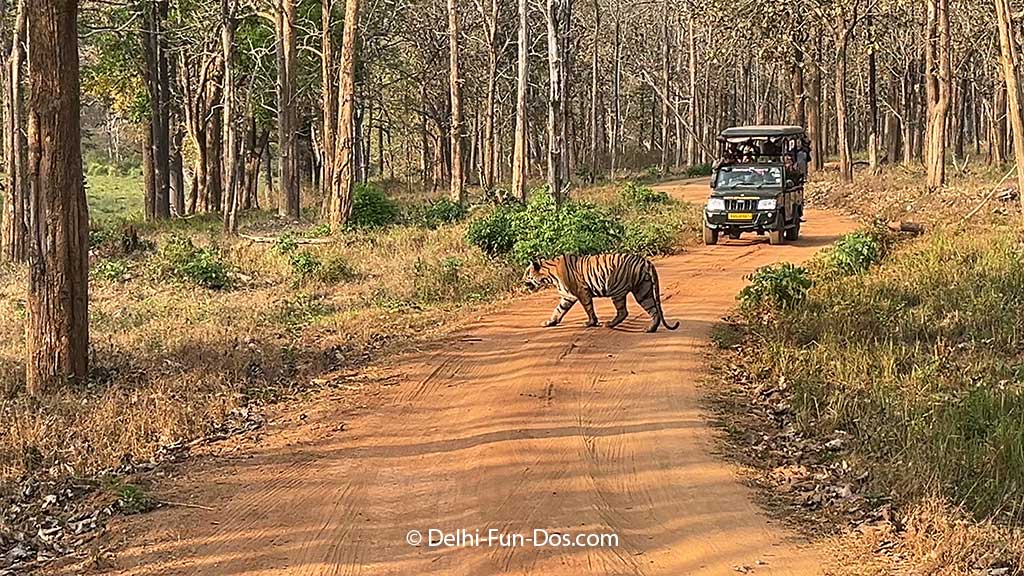
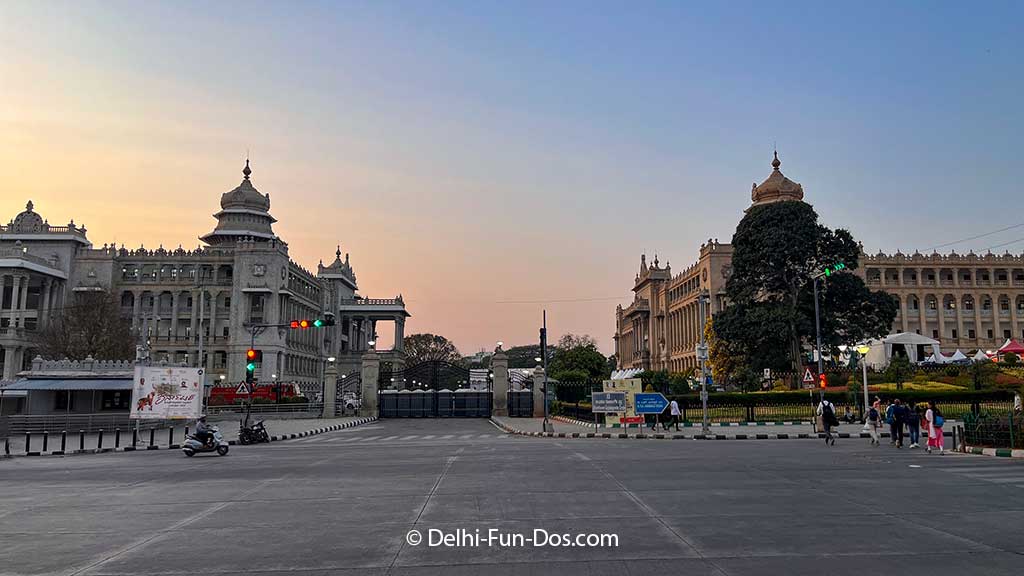
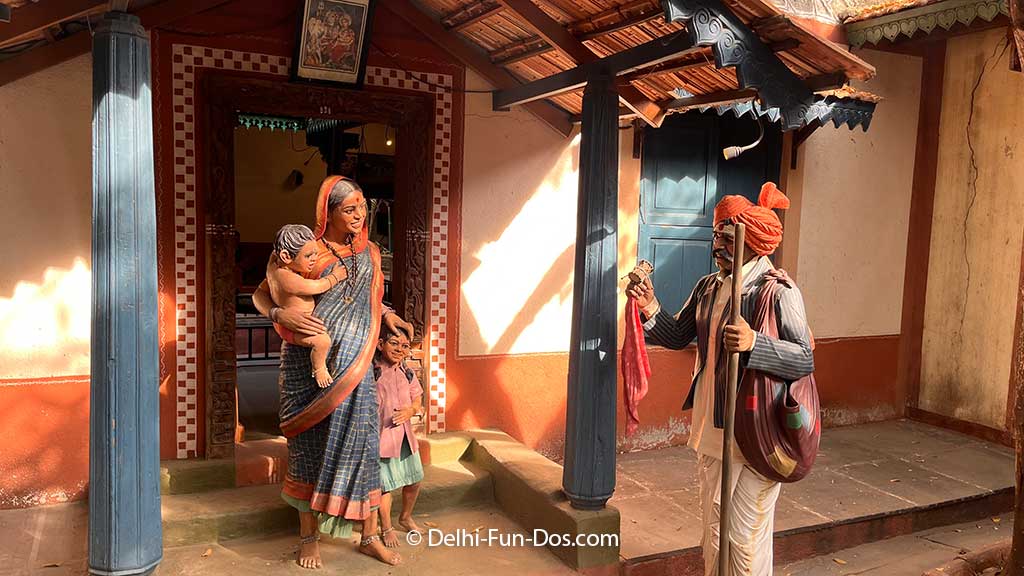
India has always fascinated me and the possibility of this experience you have done is really special. I like your story!
What a beautiful area! It looks like you had a great experience. I have never thought about going to India but a friend of mine is from India and all she talks about are the charms of this amazing country.
I haven’t been there and I am so glad of this post because I learned so much about that place. This is really interesting.
Your photos are so clear and truly capture the essence of this place. Thanks for sharing this
Sounds like a fun two days in a world that is very different to mine! I love the picture with the boat and all the birds!
oh my what an amazing experience to go through! I love the photos
I love the look of this! I would really love to take part in the ceremony and go for the Grand Dip. It seems like the ultimate spiritual experience.
What a fascinating location. Taking a holy dip or spending time in the Tent City seems like a unique experience.